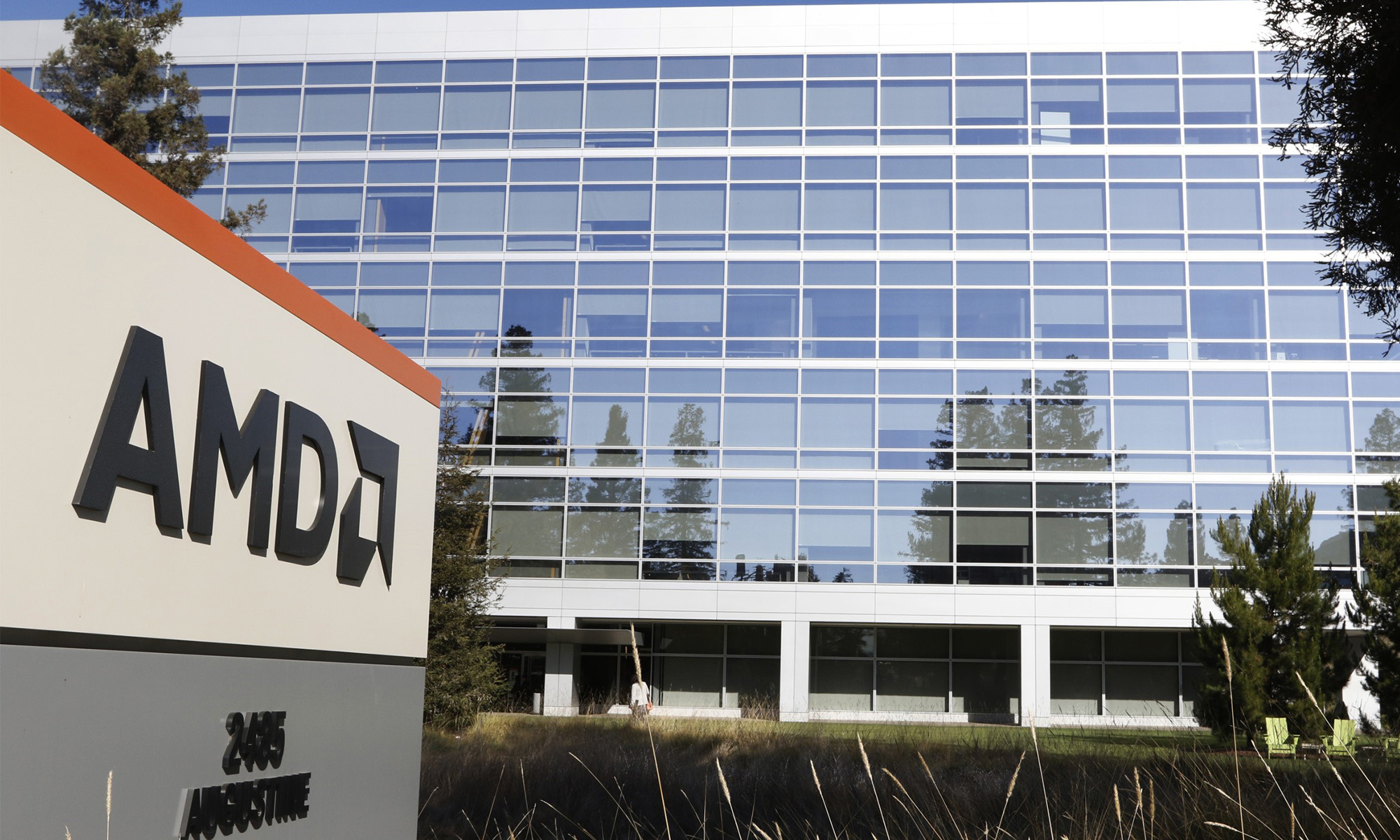Advanced Micro Devices (AMD 0.41%) is an important player in the global semiconductor industry as its chips power multiple applications such as personal computers (PCs), gaming consoles, data center servers, and communications and aerospace equipment, among others. But its performance on the stock market has left a lot to be desired in the past three years.
AMD stock has been weighed down by factors such as sharp declines in PC shipments in 2022 and 2023, the poor performance of its embedded business on account of tepid demand from telecom customers, and soft demand from the gaming segment. Additionally, the company's inability to corner a substantial chunk of the booming artificial intelligence (AI) chip market, where Nvidia has established itself as the clear leader, has also dented investor confidence.

NASDAQ: AMD
Key Data Points
All this explains why AMD stock has clocked just 17% gains in the past three years. That's way lower than the 68% jump in the Nasdaq Composite index over the same period. However, AMD's financial performance has been picking up pace in recent quarters thanks to a solid jump in sales of its PC and data center chips.
But will the company be able to sustain this momentum over the next three years and deliver market-beating returns?
AMD's growth is picking up and it is likely to keep getting better
AMD has witnessed a nice jump in its revenue and earnings in the past couple of years. This is evident from the chart below.
AMD Revenue (TTM) data by YCharts
This impressive turnaround can be attributed to the gradual recovery in the PC market, as well as AMD's entry into the data center graphics processing unit (GPU) space. Sales of PCs were up by 3.9% last year, and they are expected to head higher on the back of the growth in AI-enabled PCs and the end of support for Windows 10 PCs in October.
Market research firm TechNavio is expecting the PC market to clock a compound annual growth rate of almost 8% through 2028. This suggests that the next three years for the PC market are likely to be much better than the last three. This is great news for AMD investors as the company's client central processing unit (CPU) business has been in fine form in recent quarters.
For example, AMD's client segment revenue shot up an impressive 68% year over year in Q1 to $2.3 billion, accounting for 31% of its top line. This was extremely impressive when you consider that global PC shipments rose 6.7% year over year in Q1. AMD has been consistently gaining share in the client CPU market in recent quarters, and this explains why its growth significantly exceeded the broader market.
According to Mercury Research, AMD's revenue share of the client CPU market shot up by more than 10 percentage points in the first quarter of 2025 to 26.5%. This was better than the increase of 3.5 percentage points in its unit share to 24.1%, suggesting that AMD is enjoying stronger pricing power for its processors.
AMD's market share numbers also tell us that the company still has a lot of room for growth. Management remarked on the latest earnings conference call that it is confident it can grow "client processor revenue well ahead of the market in 2025," a trend that's likely to continue over the next three years considering the problems faced by Intel, AMD's rival in this market.
So, a combination of higher market share along with the PC market's recovery over the next three years could turn out to be a big growth driver for AMD.
Meanwhile, AI data centers are boosting demand for AMD's server CPUs and GPUs. This explains why the company's data center revenue shot up an impressive 57% year over year in the first quarter of 2025 to $3.7 billion. Just like the client CPU market, AMD has been eating into Intel's share of data center CPUs. Its revenue share of the server CPU market increased by more than 6 percentage points in Q1 to 39.4%.

Image source: Getty Images.
There is a good chance that AMD will be able to corner a bigger share of the server CPU market in the future as major cloud computing providers and enterprise customers have been turning to this platform to power their data centers. Moreover, AMD believes that the launch of its next-generation server CPU platform, which will start shipping in the second half of the year, should continue to power the growth of this segment.
This won't be surprising as the company estimates that the fifth-generation processors based on the Turin architecture could deliver 17% better performance while tackling enterprise and cloud workloads as compared to the previous generation processors. Even better, they are expected to deliver a 37% improvement in performance during AI and high-performance computing tasks.
On the other hand, AMD's customer base for its data center GPUs is also expanding. The company is not only adding new customers for its Instinct series of data center graphics cards, but is also bringing new ones on board. The company's momentum in the data center GPU market could get better once it launches its upgraded MI350 accelerators this year.
AMD is promising big performance gains by "increasing memory capacity and bandwidth 1.5x, adding support for new data types, and improving network efficiency to deliver 35x higher throughput and performance compared to MI300x." Not surprisingly, AMD says that the demand for its upcoming AI GPUs is solid, with the likes of Oracle already set to deploy clusters powered by its new chips.
Again, investors would do well to note that AMD doesn't need to become the biggest player in the AI GPU market. It could witness a significant jump in its data center GPU revenue over the next three years even if it plays second fiddle to Nvidia.
More reasons to buy the stock
AMD stock is currently trading at 28 times forward earnings, which is a discount to the Nasdaq-100 index's earnings multiple of 31.5. What's more, the stock has a price/earnings-to-growth ratio (PEG ratio) of 0.58 based on its projected earnings growth over the next five years, according to Yahoo! Finance.
A PEG ratio of less than 1 means that a stock is undervalued when you take into account the growth it could deliver over the next five years. Not surprisingly, consensus estimates are projecting AMD's earnings to increase to $6.88 per share in 2027, which would be more than double its 2024 earnings of $3.31 per share.
Assuming AMD trades at 27 times earnings after three years (in line with the Nasdaq-100's forward earnings multiple) and does hit the consensus earnings estimate, its stock price could jump to $188. That would be a 66% jump from current levels, suggesting that this tech stock could deliver a much-improved performance over the next three years.






